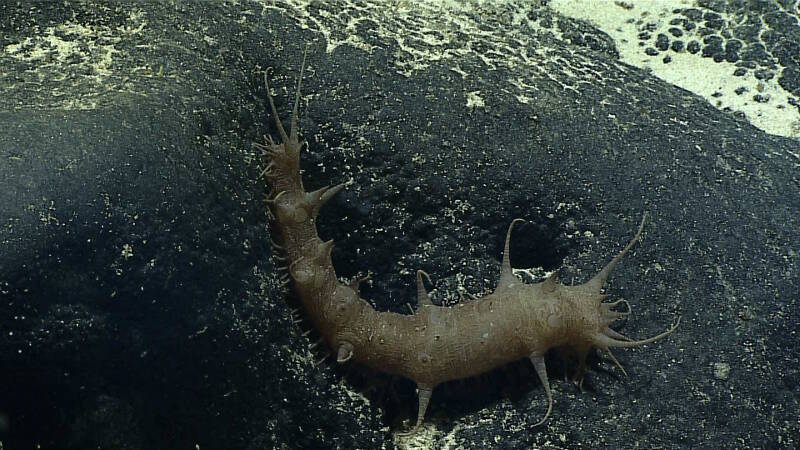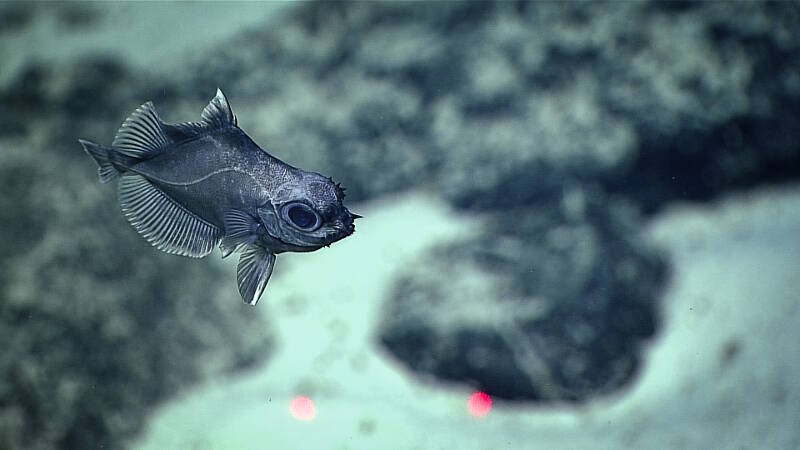Our second dive at Titov Seamount started at the base of a steep, sedimented slope at 1,227 meters. On touchdown, Deep Discoverer immediately encountered a rattail previously unobserved on the expedition and synaphobranchid eels. Other fish observed on the dive included several cusk eels, rattails, goosefish, brotula, oreo fish, tripod fish, deep-sea spiny eels, and bristlemouths. On the scattered manganese iron oxide coated boulders and rocks, the scientists observed octocorals, generally oriented perpendicular to the current flow, which was north to south at the base of the slope. As the remotely operated vehicle progressed upslope, the sedimented seafloor was bordered by exposed rock, and several coral colonies were observed attached to the hard substrate. On the rock fringe, there were octocorals, bamboo coral, black corals, stony colonial and solitary corals, and sea pens. Other fauna included crinoids, sea cucumbers, sponges (unknown demosponges and encrusting sponges), sea stars, urchins, red crabs, a tunicate, squat lobsters, xenophyophores, nematocarcinids, and a benthic siphonophore. Along the crest of the seamount, several large boulders and rock features looked like coral gardens, with multiple colonies of deep-sea corals, sponges, and associates. The hard substrate was dominated by yellow plexaurids and primnoids. Throughout the dive, suspended particulate material was observed, possibly indicative of sufficient food supply to sustain these corals. Coral and sponge associates included euryalid serpent stars, barnacles, anemones, polychaetes, amphipods, shrimp, and cephalopod egg cases. The ship will return to the Winslow Reef area tomorrow to add to the limited knowledge of the species in that area.

